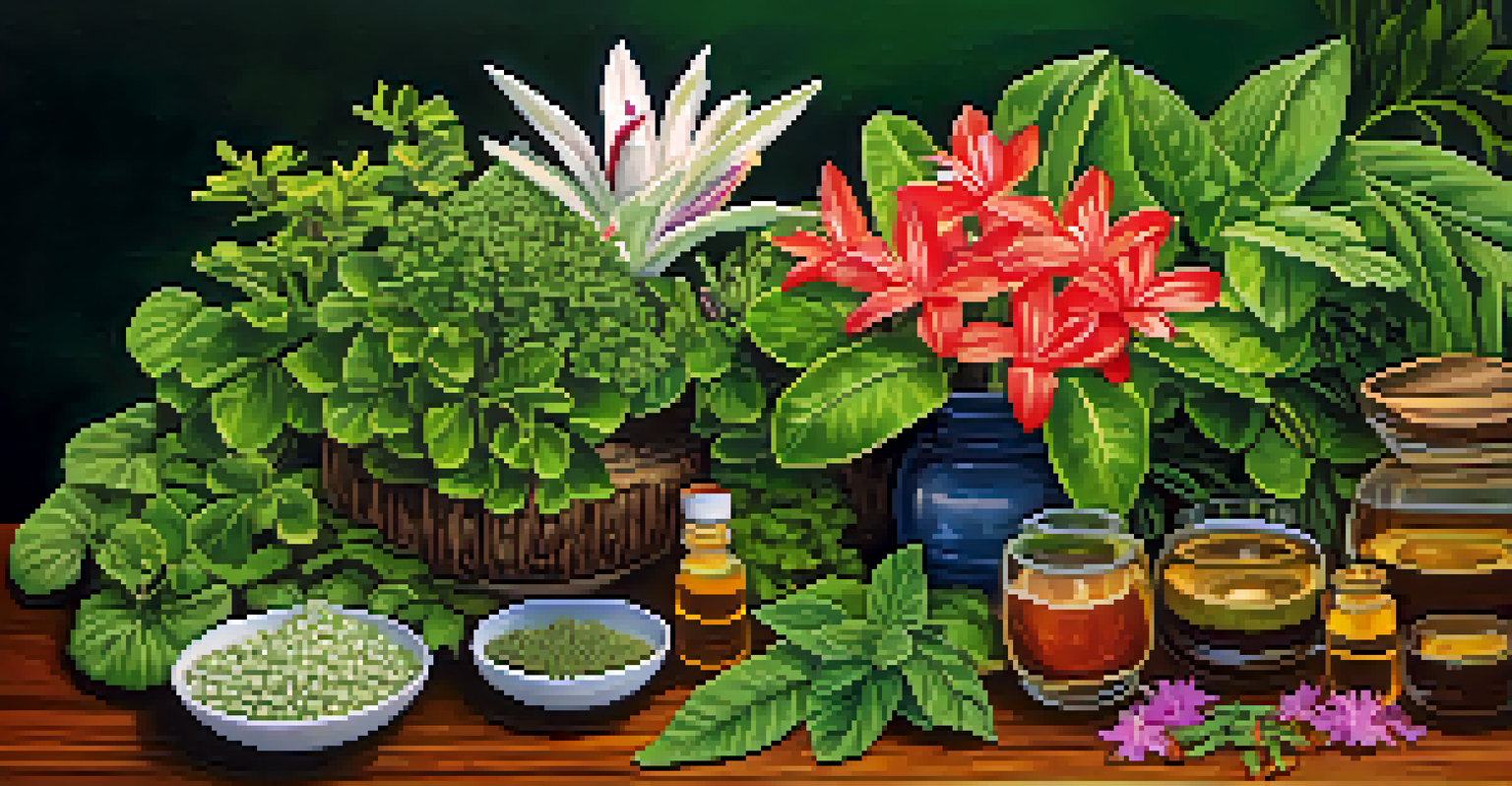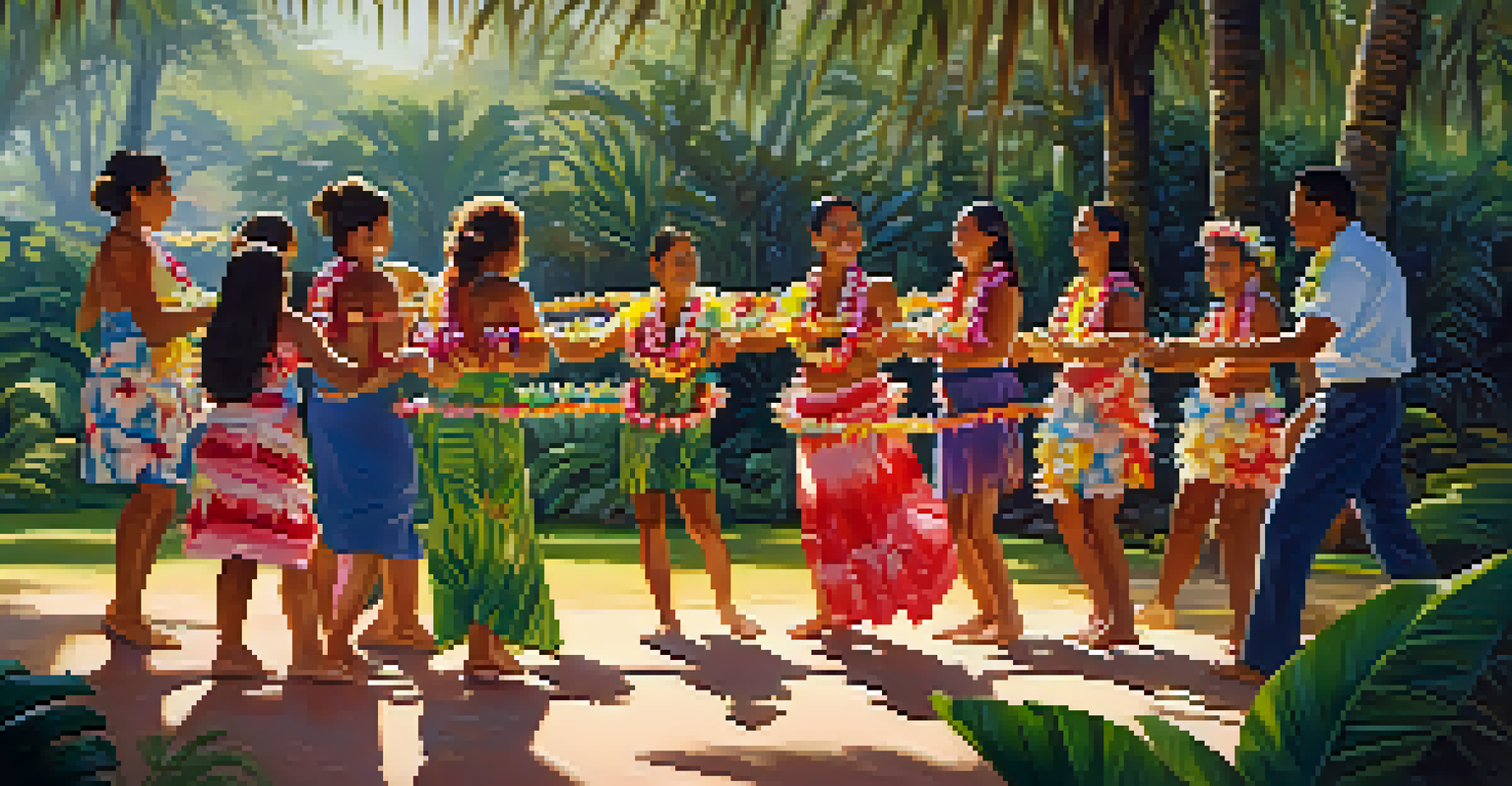Understanding the Role of Mana in Hawaiian Healing

What is Mana and Its Significance in Hawaiian Culture?
Mana is a vital concept in Hawaiian culture, representing spiritual energy or power. It is believed to be present in all living things, including people, animals, and nature. In Hawaiian tradition, mana is not just a personal trait; it can also be gathered and amplified through rituals, relationships, and the environment.
The spirit of the Hawaiian people is deeply connected to the land, the sea, and the sky, and this connection is the essence of mana.
Understanding mana is essential to grasping the depth of Hawaiian healing practices. It connects individuals to their ancestors, the land, and the universe, creating a holistic framework for health. This cultural perspective emphasizes that well-being extends beyond the physical, incorporating emotional and spiritual dimensions.
For Hawaiians, mana is the life force that influences health and healing. By nurturing and balancing one's mana, individuals can achieve harmony within themselves and with their surroundings, leading to improved overall wellness.
The Connection Between Mana and Healing Practices
In Hawaiian healing, mana plays a critical role in various practices, such as hoʻoponopono, a traditional method of conflict resolution and healing. This practice involves restoring harmony through communication, forgiveness, and love, emphasizing the importance of collective mana. By addressing issues within relationships, individuals can enhance their personal and shared mana, promoting healing.

Another healing practice, lāʻau lapaʻau, utilizes herbal medicine and the spiritual properties of plants to enhance mana. Practitioners believe that certain herbs possess unique mana that can aid in physical and spiritual healing. This connection to nature underscores the belief that everything is interlinked, reinforcing the idea that healing is a holistic journey.
Mana: Spiritual Energy in Healing
Mana represents a vital spiritual energy in Hawaiian culture that connects individuals to their ancestors, the land, and promotes holistic well-being.
Thus, Hawaiian healing is not merely about treating symptoms; it’s about nurturing mana to foster balance and well-being. Healing rituals often include chants (oli) and prayers that invoke spiritual power, further integrating mana into the process.
How Mana Is Cultivated and Strengthened
Cultivating mana involves various practices that individuals can adopt in their daily lives. Engaging in activities like hula, chanting, and spending time in nature are ways to strengthen one’s mana. These practices not only foster a connection to Hawaiian culture but also help individuals feel more grounded and energized.
Healing is not just about fixing what is broken; it is about restoring the harmony of mana within and around us.
Family and community also play a significant role in strengthening mana. By participating in communal events or rituals, individuals contribute to a shared pool of mana, enhancing collective well-being. This interconnectedness emphasizes that healing is often a communal endeavor, highlighting the importance of relationships.
Furthermore, personal reflection and mindfulness can help individuals recognize and enhance their mana. Practices like meditation or journaling allow for introspection, helping to clear negative energy and reinforce positive connections, both internally and externally.
The Role of Spirituality in Hawaiian Healing
Spirituality is at the heart of Hawaiian healing practices, with mana serving as a bridge between the physical and spiritual realms. Many healers (kahuna) emphasize the importance of aligning one’s mana with higher spiritual forces. This alignment is believed to enhance the effectiveness of healing methods and foster a deeper sense of connection.
Rituals and ceremonies often invoke the spirits of ancestors and deities, further empowering the healing process. These spiritual elements create a supportive environment where individuals can tap into greater sources of mana. This communal spiritual energy can amplify personal healing journeys, making the process more profound.
Healing through Community and Nature
Hawaiian healing practices emphasize the importance of nurturing personal and collective mana through community engagement and a deep connection to nature.
In essence, spirituality and mana are intertwined in Hawaiian healing, illustrating that true wellness encompasses body, mind, and spirit. By honoring this connection, individuals can experience transformative healing that resonates on multiple levels.
Examples of Mana in Hawaiian Healing Practices
One of the most striking examples of mana in Hawaiian healing is the practice of lāʻau lapaʻau, where practitioners use plants and herbs believed to hold specific mana. Each plant is thought to possess unique properties that can aid in healing various ailments. This connection reflects the belief that nature is alive with mana and can support human health.
Another example is the practice of ho’oponopono, where individuals work through personal and familial conflicts to restore harmony. This approach not only resolves issues but also enhances the mana of everyone involved, creating a healing ripple effect. It highlights how addressing emotional and relational aspects is crucial for overall wellness.
These examples illustrate that mana is not just a theoretical concept; it is woven into the fabric of everyday healing practices in Hawaiian culture. By recognizing and harnessing mana, individuals can engage in a more profound and holistic healing experience.
Modern Adaptations of Hawaiian Healing and Mana
In today’s fast-paced world, many individuals are rediscovering the value of Hawaiian healing practices and the role of mana. Wellness retreats, workshops, and online resources are making these ancient traditions more accessible. As people seek holistic approaches to health, the teachings of mana resonate with those looking for balance in their lives.
Modern practitioners often blend traditional methods with contemporary wellness trends, creating a unique fusion that honors the past while addressing present needs. This adaptation allows for greater inclusivity, inviting diverse individuals to explore the power of mana in their own healing journeys.
Modern Adaptations of Hawaiian Wisdom
Contemporary wellness trends are incorporating Hawaiian healing practices and the concept of mana, making these ancient traditions more accessible and relevant today.
Moreover, as awareness of mental health grows, the emphasis on emotional and spiritual well-being in Hawaiian practices becomes increasingly relevant. By integrating mana into modern healing, individuals can cultivate resilience and find deeper meaning in their wellness journeys.
Conclusion: Embracing Mana for Holistic Healing
Understanding and embracing mana can significantly enhance one’s journey toward holistic healing. By acknowledging the interconnectedness of body, mind, spirit, and community, individuals can cultivate a more profound sense of well-being. Hawaiian healing practices offer valuable insights that can be applied in various aspects of life.
As we navigate our personal healing journeys, incorporating elements of mana can foster resilience and harmony. Whether through spiritual practices, community engagement, or self-reflection, the essence of mana encourages individuals to seek balance and connection.

Ultimately, embracing mana and Hawaiian healing traditions can lead to a richer, more fulfilling life. By recognizing and nurturing our mana, we can enhance not only our own well-being but also contribute positively to the world around us.